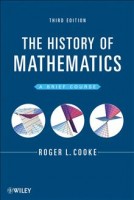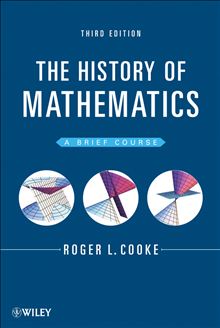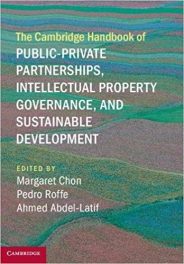 Author: Roger l. Cooke
Author: Roger l. Cooke
Publisher: Wiley
Book Review by: Sonu Chandiram
When studying the history of mathematics, at least three approaches or coordinates come to mind, points out the author of this book Roger L. Cooke, PhD., who is Williams Professor of Mathematics at the University of Vermont.
Those three approaches or coordinates are: culture, chronology and content. As you go through this book, you will discover that one or two of the coordinates frequently overlap. Sometimes all three overlap.
The first two editions of this book were organized in different ways than the current one.
The first edition had material organized on the basis of each chapter devoted to a single culture or period within a single culture and then subdivided by mathematical topics.
The second edition had first a general survey of mathematics and mathematical practice, followed with division by subject matter. The subject matters were: numbers, geometry, algebra, analysis and mathematical inference.
For the present edition, the third one, the author writes that “in the lexicographic ordering of the three-dimensional coordinate system, culture is the first coordinate, chronology the second, and mathematical content the third.”
Indeed, because the discovery and creation, the evolution and study of numbers and related concepts were occurring simultaneously all over the world, and sometimes overlapping, it would be problematical to decide how to organize a history of mathematics. But the author has done it expertly in this very useful book.
In terms of broad regions of the world where numbers and related symbols were being used in the past, this book covers the Middle East – 2000 to 1500 BCE; Greece – 500 BCE to 500 CE; India, China and Japan – 500 BCE to 1700 CE.; Islamic mathematics – 800 to 1500; and European mathematics – 500 to 1900. (Notice the overlaps of time I mentioned earlier)
Within the first two regions, the coverage includes Mesopotamia and Egypt in the Middle East; and Athens and Alexandria in Greece.
Within the third region which consists of India, China and Japan, much discovery and development occurred in this long period of time.
In India, the book studies the work of the sulva sutras; the mathematics of the Jains; the Bakshali manuscript; and the siddhantas; Hindu-Arabic numerals; and the discoveries and works of ancient Indian mathematicians such as Aryabhata I, Brahmagupta, Bhaskara II, and Kuttaka.
In China, the book covers numerous mathematicians and their works, with one of the earliest being Zhou Bi Suan Jing to a later one: Chen Dawei. In early Chinese algebra the book has coverage of the work of Jiu Zhan Suan Shu and in geometry, the book has coverage of the works of Zhou Bi Suan Jing, Sun Zi Suan Jing, and again of the algebra master Jiu Zhan Suan Shu.
Early Japanese mathematicians and their works are also covered in this book, notably of Yoshida Koyu, Seki Kowa and Takebe Kenko.
The above are covered in Parts I through Part VI, mainly with the culture and chronology approaches. In Part VII, the dominant approach or coordinate is content. The topics discussed are: algebra, differential geometry, integrals, logic, non-Euclidean geometry, probability, projective and algebraic geometry, real numbers, set theory and topology.
All in all, this is a good book for those interested in finding out how math developed and evolved in different parts of the world. The very industrious Roger L. Cooke has done a tremendous amount of painstaking work in gathering a very large amount of material, and meticulously weaving all that together by doing, I assume, a large amount of fact-checking, and finally, writing. We commend him for producing this excellent, large book of 615 pages.







